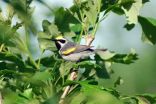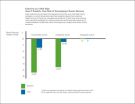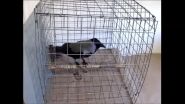INFORMATION:
A change of diet to unmask cancer vulnerabilities and reduce cancer risk
2014-12-18
(Press-News.org) Many recent studies showed that calorie restrictions reduce the incidence of cancer, whereas high-calorie diets cause obesity and diabetes, both of which increase the risk of developing cancers. However, tumor biology still hides complex mechanisms, as revealed by researchers from the Faculty of Medicine of the University of Geneva (UNIGE), Switzerland. In a study published in Cell Metabolism, scientists not only found the unexpected benefit that a change of diet had on certain types of lung cancer, they also deciphered the molecular mechanism underlying this dietary effect and showed how this cancer vulnerability could be exploited in targeted treatment strategies with limited side effects.
Unlike tumors caused by other oncogenes, KRAS-driven tumors, an oncogenic mutation common in lung, pancreas and colon cancers, are known to be sensitive to dietary restrictions. Although the effect of calorie restriction on these tumors is widely studied, Professor Roberto Coppari and his team from the Department of Cell Physiology and Metabolism at UNIGE's Faculty of Medicine, with colleagues from the University of Texas Southwestern Medical Center and from the Ancona University, decided to explore what would the outcomes of a change of diet be (from low to high-calorie diet). Surprisingly, they discovered that a high-calorie diet could have a potent anti-tumor action if the switch of diet took place before the tumor onset. Conversely, a high-calorie diet started after the tumor onset fueled tumor growth and worsened prognosis. The fact that the moment of dietary change is crucial indicates that this effect is not due to the diet per se but to the metabolic changes it engenders. "Our study does not show that, by eating junk food, people would be protected from lung cancer. But the high-calorie diet helped us discover a very specific molecular mechanism required for lung tumor cells to proliferate that could pave the way for new therapeutic approaches", underlines Giorgio Ramadori, the study's co-first author with Georgia Konstantinidou.
A matter of thresholds
In normally functioning cells, a particular kind of molecules - called chaperones - helps proteins to fold and function properly. However, in case of protein overload, chaperone expression increases, with the goal of reducing the likelihood of proteins being unable to function correctly. In the endoplasmic reticulum (the part of the cells that allows proteins to be properly sorted), when protein overload is achieved, endoplasmic reticulum stress (ER stress) occurs, which involves an increased chaperone expression. When this stress is too high, however, cells cannot cope with it and die. In tumors, the ER stress threshold is different and, in some cases, it seems higher, which constitutes a possible explanation for the fact that they do not die, but can proliferate abnormally even in these circumstances.
The scientists discovered that the dietary change was actually a way to trigger a raise in the ER stress. Indeed, if the ER stress threshold is raised before the tumor onset, the sick cells do not have the ability to trigger an effective response and tumor progression is hampered. However, if the change took place after the tumor appeared, tumor cells already resolved a good part of ER stress and the additional stress may actually fuel the proliferation phenomenon.
A potential cancer treatment with limited side effects
Reducing side effects is a major goal for achieving improved cancer therapy, as quite often treatment kills indiscriminately sick and healthy cells alike. By undertaking transcriptome analyses of lung tumors from the different dietary groups, the scientists identified a specific chaperone protein, FKBP10, of which expression was greatly reduced by a switch to a high-calorie diet. This protein was expressed in human lung cancer cells but not in the healthy ones. Very interestingly, this same protein is usually expressed during the embryonic development and early age, but not in adults (in mice and most likely in human beings). When the embryo is developing, it induces an important ER stress, which is resolved, in part, by these chaperones. After the development phase, the ER stress diminishes greatly. Hence, several chaperones, including FKBP10, are not needed any longer and stop being expressed; tumors, however, reactivate the expression of the FKBP10 protein, probably to cope with their ER stress. An inhibitor to FKBP10 would therefore act as a therapeutic agent able to selectively hinder cancer cell proliferation while sparing healthy lung.
"FKBP10 was not previously thought to be important for cancerous cells. In this study we show that knock-down of FKBP10 leads to reduced cancer growth. Human lung cancer cells express FKBP10 while the nearby healthy lung tissue does not; this is very interesting and appealing to eventually translate these findings to the clinical arena. Hence, if we manage to identify the right inhibitor, we may open the door to new therapeutic strategies that will be able to hinder cancer cells proliferation without damaging the healthy cells. The inhibition of this protein is predicted to have minimal side effects as it is not expressed in healthy tissues, at least in adulthood," concludes Roberto Coppari, who estimates that, if preclinical data support such expectation, clinical trials could start in a few years' time.
ELSE PRESS RELEASES FROM THIS DATE:
Sensing distant tornadoes, birds flew the coop
2014-12-18
Berkeley -- When birds unexpectedly flee their nesting grounds, it may be a demonstration of Mother Nature's early-warning system that a massive storm is approaching.
While tracking a population of golden-winged warblers, a research team led by ecologist Henry Streby at the University of California, Berkeley, discovered that birds in the mountains of eastern Tennessee fled their breeding grounds one to two days ahead of the arrival of powerful supercell storms. The storm system swept through the central and southern United States in late April 2014, generating 84 confirmed ...
Tackling neurotransmission precision
2014-12-18
This news release is available in Japanese. Behind all motor, sensory and memory functions, calcium ions are in the brain, making those functions possible. Yet neuroscientists do not entirely understand how fast calcium ions reach their targets inside neurons, and how that timing changes neural signaling. Researchers at the Okinawa Institute of Science and Technology Graduate University have determined how the distance from calcium channels to calcium sensors on vesicles affects a neuron's signaling precision and efficacy. In international collaboration with research ...
How will climate change transform agriculture?
2014-12-18
Climate change impacts will require major but very uncertain transformations of global agriculture systems by mid-century, according to new research from the International Institute for Applied Systems Analysis.
Climate change will require major transformations in agricultural systems, including increased irrigation and moving production from one region to another, according to the new study, published in the journal Environmental Research Letters. However without careful planning for uncertain climate impacts, the chances of getting adaptation wrong are high, the study ...
Self-reported daily exercise associated with lower blood pressure, glucose readings
2014-12-18
PASADENA, Calif., December 18, 2014 -- Self-reported moderate to vigorous exercise was associated with lower blood pressure and blood glucose levels in a Kaiser Permanente study published in the journal Preventing Chronic Disease. Data collected from Kaiser Permanente's Exercise as a Vital Sign (EVS) program, in which medical office staff asks patients about their exercise habits at every health care visit, revealed associations between moderate to vigorous exercise and improved measures of cardiometabolic health for both men and women. Few previous studies have examined ...
Scientists locate homing signal in brain, explaining why some people are better navigators
2014-12-18
The part of the brain that tells us the direction to travel when we navigate has been identified by UCL scientists, and the strength of its signal predicts how well people can navigate.
It has long been known that some people are better at navigating than others, but until now it has been unclear why. The latest study, funded by the Wellcome Trust and published in Current Biology, shows that the strength and reliability of 'homing signals' in the human brain vary among people and can predict navigational ability.
In order to successfully navigate to a destination, you ...
Crows are smarter than you think
2014-12-18
VIDEO:
Research from Univ. of Iowa and Russian scientists show crows are capable of executive-level thinking.
Click here for more information.
Crows have long been heralded for their high intelligence - they can remember faces, use tools and communicate in sophisticated ways.
But a newly published study finds crows also have the brain power to solve higher-order, relational-matching tasks, and they can do so spontaneously. That means crows join humans, apes and monkeys in exhibiting ...
Scientists discover tiny gene fragments linked to brain development and autism
2014-12-18
TORONTO -- Very small segments of genes called "microexons" influence how proteins interact with each other in the nervous system, scientists at the University of Toronto have found, opening up a new line of research into the cause of autism.
The researchers found that microexons are used in neurons by alternative splicing, a process in which a single gene can produce many different proteins. Microexons are pasted -- or spliced -- into gene messengers (mRNAs) to generate forms of proteins that the nervous system needs to function properly. Misregulation of this process, ...
Scientists map out how childhood brain tumors relapse
2014-12-18
RESEARCHERS have discovered the unique genetic paths that the childhood brain tumour medulloblastoma follows when the disease comes back, according to research* published in Cancer Cell today (Thursday).
The study - funded by Cancer Research UK, Action Medical Research and others** - shows that taking an extra tumour sample at recurrence, when there are no effective therapies, could identify subsets of patients that might be treatable with existing drugs that target the genetic faults.
The scientists, based at Newcastle University and The Institute of Cancer Research ...
UCL discovery in the fight against antibiotic-resistant bacteria
2014-12-18
There are two main families of bacteria : those that are surrounded by a single membrane (or one outer wall) and those that are surrounded by two membranes (or two outer walls). The team of Jean-François Collet, professor at the de Duve Institute at UCL, looked at this second type of bacteria.
For a bacterium to survive, it has to keep its two outer walls intact. If one of these walls is damaged, the bacterium dies. So it was vital for the UCL researchers to analyse the protection mechanisms of these bacterial "walls' (to find their weak spot), so as to be able to ...
Stem cells born out of indecision
2014-12-18
This latest research by Joshua Brickman and his research team from Danish Stem Cell Center (Danstem) at the University of Copenhagen specifically found that inhibiting or blocking stem cells ability to make a specific decision, leads to better cell growth and could lead to defined ways to differentiate stem cells.
This research is the first comprehensive analysis of a pathway important for stem and cancer cell decisions known as Erk. As a result this work could contain clues to cancer treatment as well as helping to establish a platform to make stem cell treatments for ...



